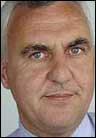Three European standards bodies have joined forces to coordinate the global dialogue on RFID-related standards as part of a European Union-funded project called the Global RFID Interoperability Forum for Standards (GRIFS).
GRIFS was officially launched this month at the Interoperability Conference in Warsaw, by GS1, the European Telecommunications Standards Institute (ETSI) and the European Committee for Standardization (CEN). The three organizations will work together for two years with standard setters around the world to move toward a global set of RFID standards.
GS1 is a private, nonprofit standards setter for the global supply chain. ETSI, founded by the European Union in 1988 as an independent organization, is credited with establishing the GSM standard. And CEN works to establish standards by bringing together national bodies from across Europe.
“There are bilateral exchanges here and there, but there is not really a place where people who have plans and actions can share their work and exchange their agendas and business plans in a formal way,” says Henri Barthel, GS1’s director of global partnerships and projects, who works with external standard organizations such as ISO.
The project’s goal is twofold, Barthel explains: First, GRIFS members plan to analyze ongoing standardization activities, and second, they want to establish relationships with parties working on standards, with the intention of “aligning” the standards and continuing the dialogue after the project is completed. GRIFS aims to minimize the expense of developing local standards that are not globally interoperable.
“The project is a European initiative, but it has a global scope, ” Barthel says. “We will involve Japanese, Chinese, American and other national and regional standard organizations. We are not pushing one standard over the other. We want to speed the standards-setting process by sharing information and, ideally, by enabling decisions to be made in certain areas.”
In mid February, GS1, ETSI and CEN commenced detailed planning of their work. In June of this year, most likely during the third week, the partners will hold a two-day workshop in Brussels for all interested parties to review a status report regarding ongoing standards-setting projects, and to begin sharing information. GRIFS will also offer further workshops: two in Asia, one in the United States and one in Europe. “The idea is not to develop the standards,” Barthel says. “It’s really about coming together and opening your workbook to show what you’re doing.”
GRIFS partners hope to see such cooperation extend beyond the duration of the EU project, and will work to get interested parties to sign a memorandum of understanding that expresses their intent to continue working together. They envision conducting approximately two meetings each year, as well as exchanging information electronically while alternately sharing the administration of the post-GRIFS project (which has not yet been named).
In creating GRIFS, GSI, ETSI and CEN responded to a call for proposals in May 2007 as part of the E.U.’s Seventh Framework Program for Information and Communication Technologies. The proposal to “support the networked enterprise” was funded with €500,000 ($736,000).
BRIDGE Publishes Standards Milestones
Separately, the BRIDGE project (Building Radio frequency Identification for the Global Environment), also funded by the European Union, has announced that two major milestones were met with the publication of two key papers. BRIDGE is currently working to set standards for looking up information about individual objects carrying an RFID tag with an Electronic Product Code (EPC).
The project members, which include GS1 member organizations, the Auto-ID Labs and several RFID solution providers and end users, have published the results on their public Web site. The papers—Requirements Document of Serial Level Lookup Service for Various Industries and High Level Design for Discovery Services—detail a design for a data model and interfaces for Discovery Services, also known as Serial-Level Look-Up Services.
The models cover both queries and the publishing of records for Discovery Services, and have already been submitted to various standards groups working in the area. They also define how users can request more detailed information about each EPC-tagged object. “This design will help us move from local-level pilots to global ones,” says Barthel, who serves as the project coordinator for the BRIDGE program.


